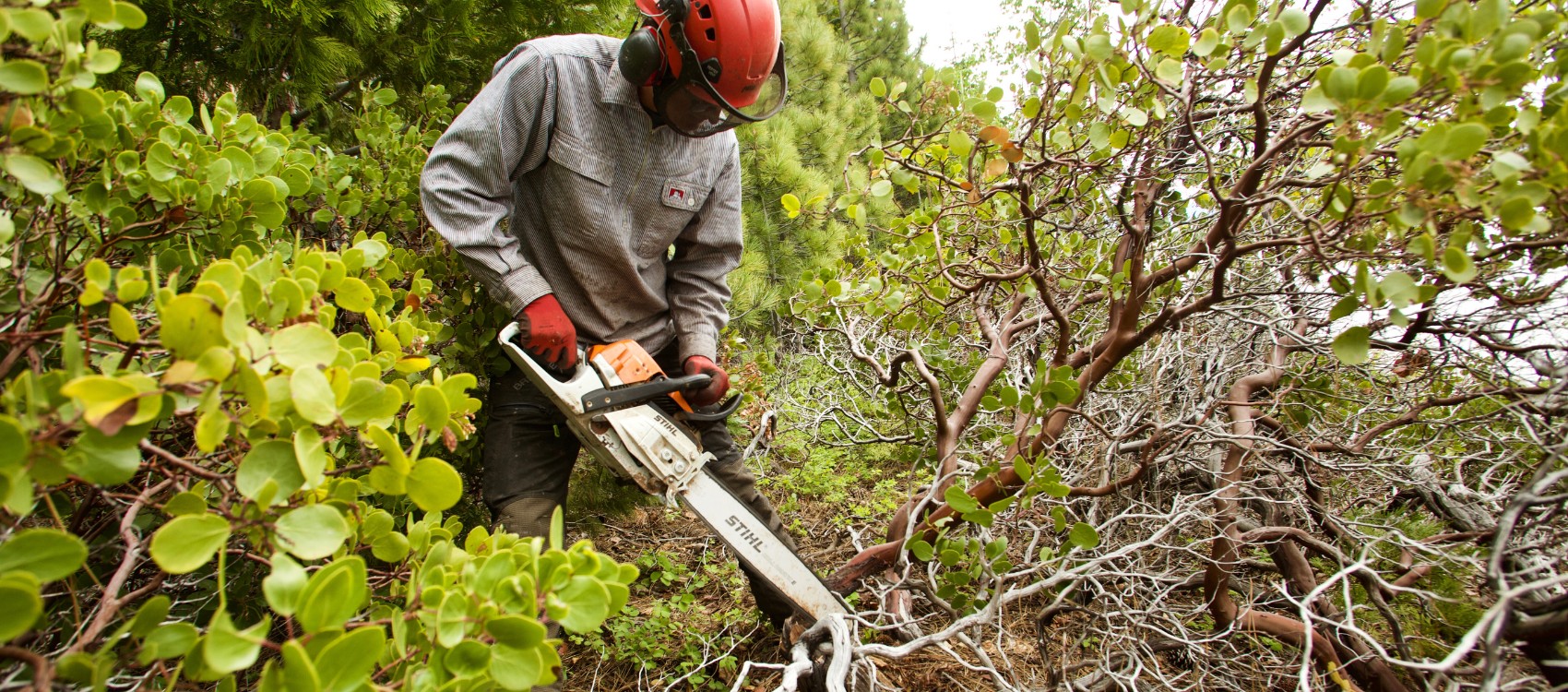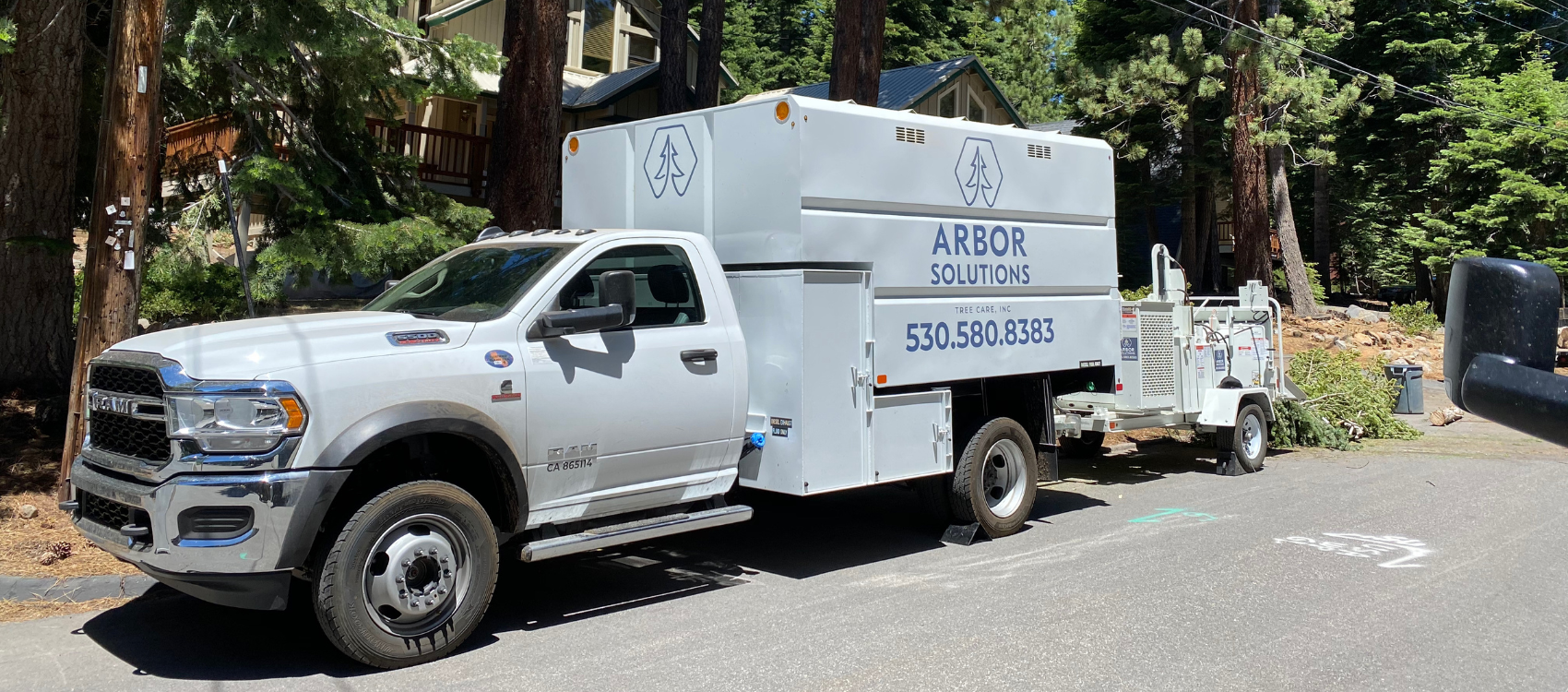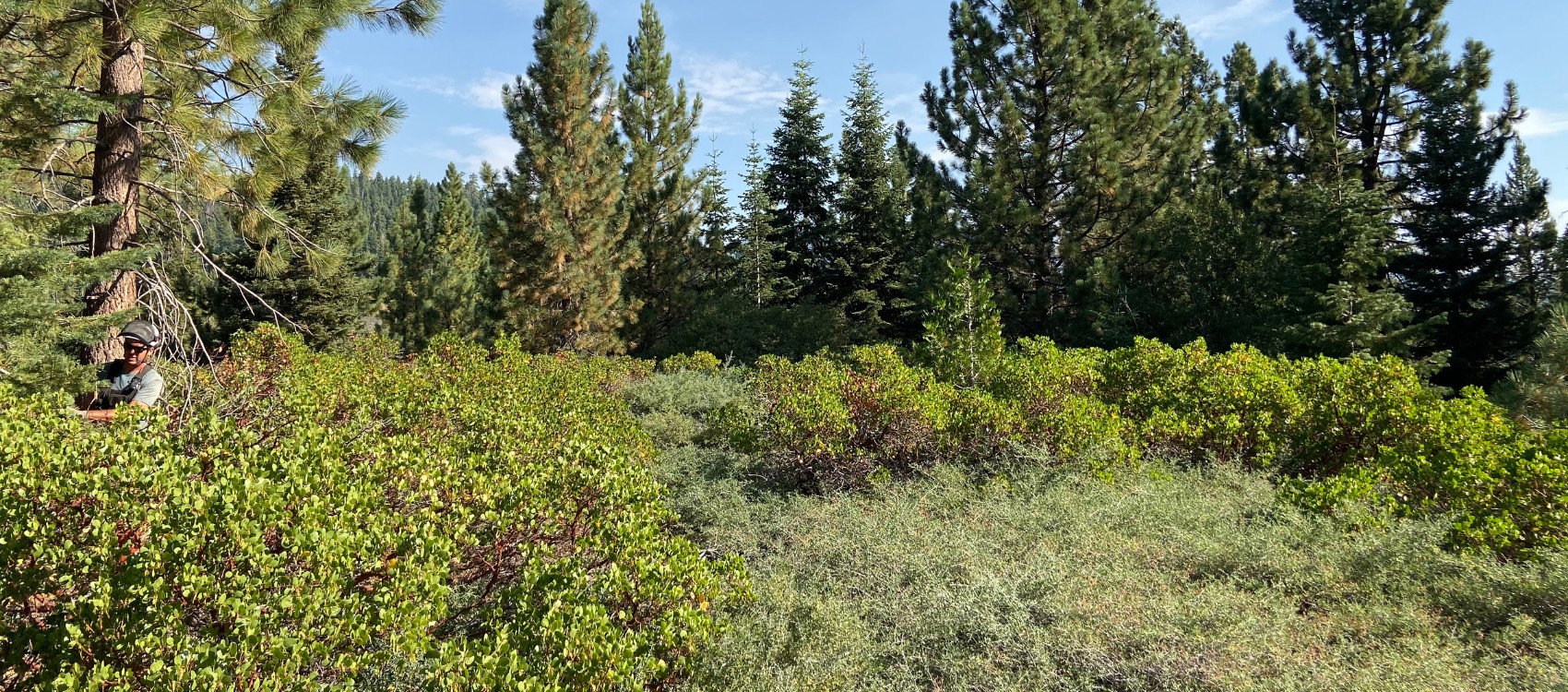Improper tree pruning practices are threatening trees across the Tahoe-Truckee region, with climbing spikes causing some of the most severe damage. While these metal spikes help climbers scale trees quickly, using them during trimming creates lasting wounds that can lead to decay, disease, and even tree death. As your local tree care experts, we’re committed to explaining why spikeless pruning is essential for your trees’ health and longevity.
Key Takeaways:
- Climbing spikes create wounds in trees that can serve as entry points for insects and diseases, potentially leading to long-term health issues or death.
- Professional arborists should only use climbing spikes only when removing a tree, not when trimming trees.
- Our team uses alternative methods, such as ground-based trimming with pole saws and specialized rigging equipment, to safely access tree canopies without damaging the trunk.
- Signs of spiked pruning include visible holes in the trunk and excessive sap production, which indicates damage to the tree’s living tissue (cambium).
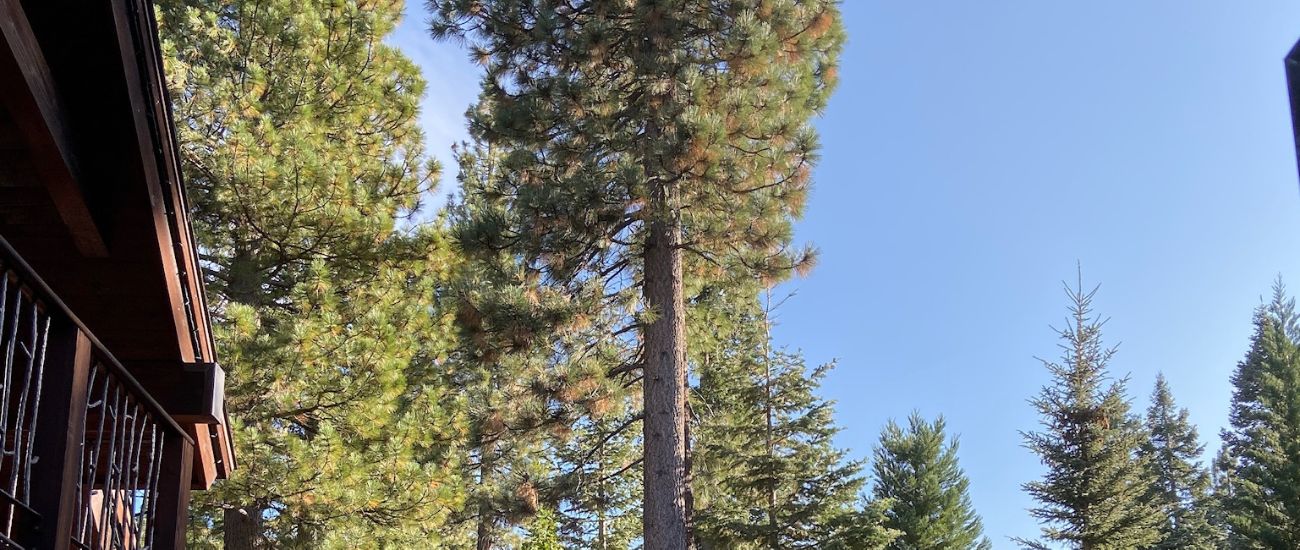
Proper tree pruning should leave your tree looking like this and shouldn’t leave any holes in the trunk.
How Pruning with Climbing Spikes Harms Your Trees
Climbing spikes (sometimes called gaffs or spurs) are a standard part of tree care equipment most companies use. They’re metal spikes that strap securely around the climber’s legs and over their boots, giving them the grip needed to climb and stay balanced in the canopy. With each step, the spikes dig into the bark, making it easier to move upward and stay in place while working.
Climbing spikes should never be used when pruning a tree, yet many tree services in the Truckee-Tahoe region still rely on them. The Tree Care Industry Association (TCIA) has strongly warned against this practice because it damages the tree and increases the risk of disease, decay, and long-term stress.
Here’s why they cause more harm than good:
- Creates an Access Point for Insects and Diseases: Trees in our region face threats from many different insects and diseases. The puncture wounds from climbing spikes can create an easy access point for pests or diseases to attack the inner portions of the tree, damaging large portions or even killing it.
- Damages Tree Tissue: Spikes pierce the cambium, the layer responsible for moving water and nutrients. This is especially harmful to Truckee-Tahoe’s softwood trees, leading to dieback and decline.
- Causes Excessive Sap Loss: A tree will secrete sap after an injury to the cambium as a trauma response. If you see sap all over your tree’s trunk after a company prunes it, it’s likely a sign they used climbing spikes during the job.
- Ruins the Aesthetics of Your Trees: Beyond their environmental benefits, trees add beauty and value to your yard. But when climbing spikes leave behind multiple puncture wounds, the tree looks damaged and unhealthy. Over time, nutrient transport issues caused by these wounds can lead to branch dieback, making the tree even less attractive.
- Makes It Harder for the Tree to Heal: Trees attempt to compartmentalize damage in one area to protect the rest of the tree. However, if they have damage all over them from climbing spikes, it becomes more difficult to compartmentalize the damage and maintain tree health effectively.
Times When Climbing Spikes Are Appropriate
Climbing spikes do have their purpose in tree care, and our team uses them when appropriate. Typically, we will only use climbing spikes when removing the tree. If the tree is supposed to remain standing, we’ll always find alternative methods for climbing your tree.
What Is Spikeless Pruning? A Better Way to Take Care of Your Trees
Spikeless pruning is a method that avoids using climbing spikes altogether. Instead, arborists rely on other techniques, such as rope and harness systems, to access the canopy without causing harm to the tree.
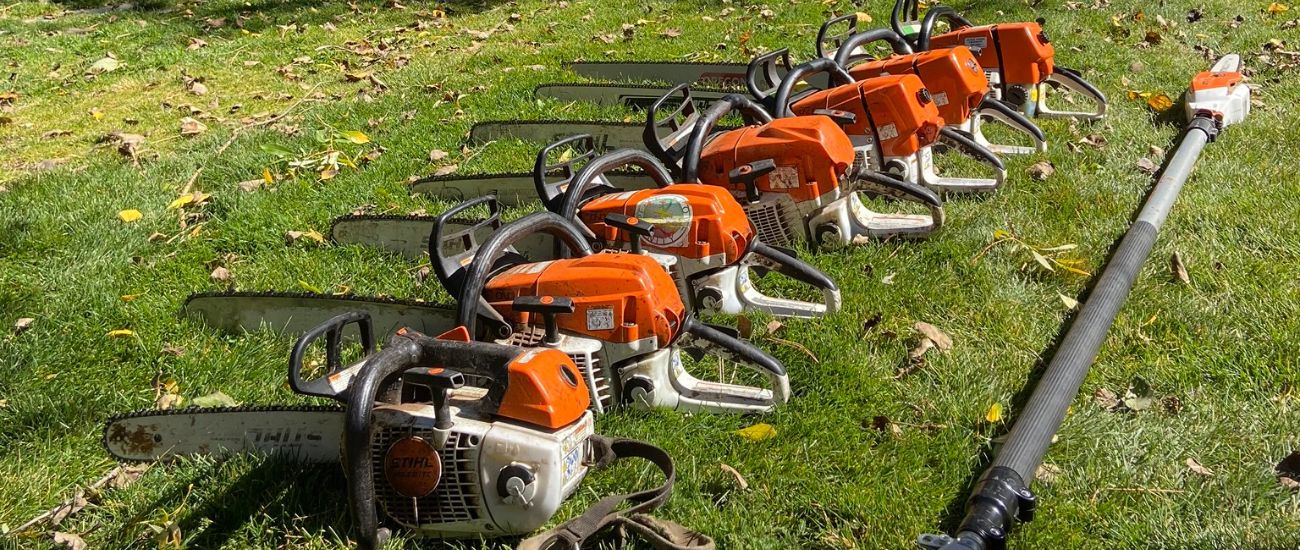
We use pole saws and chainsaws to prune trees.
How We Manage to Prune Trees Without Spikes
Pruning trees without spikes can be difficult but a worthwhile endeavor. Some methods we use that don’t involve climbing spikes include:
- Trimming from the Ground: Using pole saws, we can prune the lower portions of trees from the ground without needing to climb into the tree. This method is not always practical for our area, as common trees, like the Jeffrey pine, are very tall and there may be no branches we can reach from the ground.
- Using Rigging and Ropes: Instead of spikes, we rely on rigging systems and climbing ropes to safely access the upper canopy. Our team is trained in advanced tree-climbing techniques that protect the tree while allowing us to prune efficiently.
Frequently Asked Questions About Tree Pruning
Pruning is one of the most essential services we offer for trees, and we always try to educate our clients and neighbors about the importance of this service. We’ve provided some answers to the common questions about its benefits.
How can I tell if my trees were pruned with climbing spikes?
There are two easy ways to spot the damage left behind by climbing spikes:
- Look for Puncture Marks on the Trunk: If you see small, evenly spaced wounds running up the tree, that’s a clear sign spikes were used. These holes don’t just look bad – they can also invite pests and diseases.
- Watch for Excessive Sap: If your tree is suddenly oozing sap from multiple spots, it could be reacting to spike wounds. Trees produce sap as a defense mechanism when their cambium (the living layer under the bark) gets damaged.
When is the best time to have a professional prune my trees in Truckee-Tahoe?
Typically, the best time to prune trees is in the winter when your trees are dormant. Dormant trimming has several benefits:
- Less stress for your trees
- Lower risk of diseases or insect attacks
- Ample time for a tree to seal the wound before spring
Can I do something to help a tree that has spike injuries?
While you can’t directly fix the damage when someone uses climbing spikes during pruning, there are some things you can do to help your tree recover from the damage. Some actions we recommend taking include:
- Inspecting your tree for any signs of decay
- Noting any instances of increased insect activity
- Keeping your trees well-watered during droughts
- Placing mulch around your trees
If the damage is too severe, tree removal may be the only option.

Say No to Climbing Spikes – Get Expert Spikeless Pruning from Arbor Solutions!
The choice between spiked and spikeless pruning isn’t just about technique – it’s about your trees’ future health and survival. Professional arborists understand that climbing spikes are tools reserved exclusively for tree removal. Using them during routine trimming is a sign of inadequate training or cutting corners that puts your valuable trees at risk.
At Arbor Solutions, we invest in proper equipment, extensive training, and proven techniques to ensure your trees receive expert care without damaging their protective bark and living tissue. Our Certified Arborists use modern rigging systems and specialized equipment to safely access your trees’ canopies while preserving their long-term health.
Ready to protect your trees with professional spikeless pruning? Call us today at 530-580-8383 or request an estimate online.
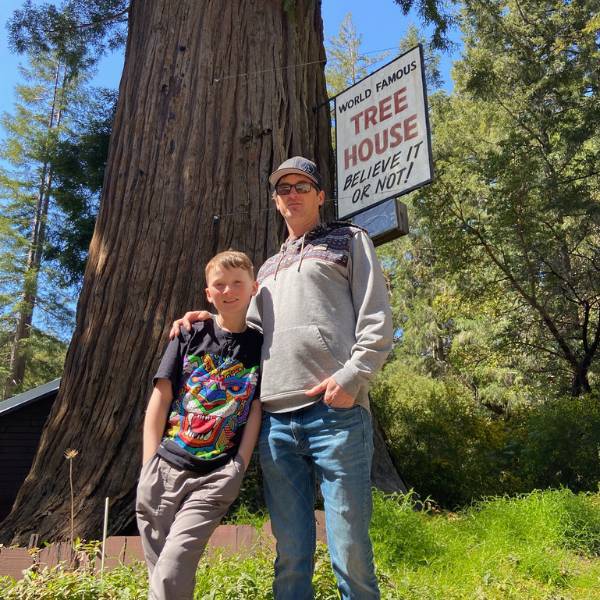
Lead Arborist James Piercy has worked in the tree service industry since moving to the Tahoe region in 1997. He has been an ISA Certified Arborist since 2004 and continues to provide expert recommendations and quality tree care throughout the region.
We publish monthly articles detailing tree care in the greater Truckee-Tahoe region. If you have a question about maintaining your trees, we may have already answered it on our Tree Care Blog.

